|
Grandma's Lyme Disease &
|
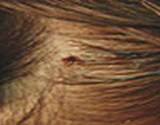 | 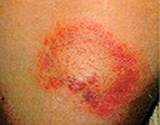 | 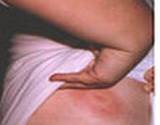 |
Lyme disease, one of the best-known tick-borne diseases, causes joint pain, fever and inflammation of the skin at the bite location. These are just some of the milder lyme disease symptoms. Disorders of the central nervous system can develop if the disease is undetected, even years after the tick bite.
Rocky Mountain spotted fever and tularemia can cause rash, nausea, fever, headaches and fatigue. No vaccine exists for these tick-borne diseases, but they do respond well to antibiotics. Natural remedies can relieve mild symptoms and support conventional therapies. Your best course of action against tick bites, however, is both vigilance and prevention.
Lyme disease generally causes the characteristic bull's-eye skin rash, but in 10 percent of the cases, no rash appears. After a few weeks or several months, some 70 percent of those who remain untreated suffer bacterial invasions of the joints and possibly other organs, notably the central nervous system, causing chronic arthritis.
Because of all the publicity of lyme disease, we not only have an epidemic of this infection, we also have an epidemic of over-diagnosis. Many doctors are too willing to diagnosis Lyme disease, apparently because the early symptoms like skin rash, headache, fever, nausea and muscle pain are common to so many other maladies.
Lyme disease is usually treated with antibiotics, which can damage the body's intestinal bacteria as well as the bacteria that cause the illness. You can try using a natural digestive aid, such as lactobacillus or acidophilus, to help the intestinal flora regenerate more quickly.
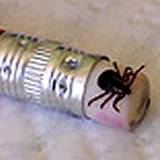 | 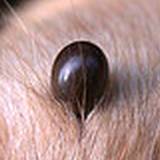 | 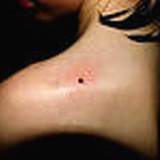 |
Ticks Survive on the Blood of Mammals
The ticks that carry Lyme disease are primarily found in:
- Connecticut
- Rhode Island
- New York
- Pennsylvania
- New Jersey
- Maryland
- Wisconsin
It is thought that, however, that the geographic areas of these infested ticks are expanding. Rocky Mountain spotted fever usually appears within the south Atlantic and south central states, as well as in the Rocky Mountain region. Tularemia mainly occurs in the south central states.
Ticks are arachnids that grow to just over 1/10 inch long and suck the blood of mammals. they attach themselves to the body, preferring to bit warm, moist areas, such as the back of the knees, the inner elbows, the underarms or beneath the breasts.
Types of Ticks that cause Disease
American Dog Tick
These types of ticks are brown and have a silvery-gray marks on their backs. They are common on the east coast but can be found in most parts of the country. They normally prefer dogs but if none are available they will go to a human host. The American Dog Tick can transmit tularemia and Rocky Mountain spotted fever and can cause a special tick paralysis in susceptible dogs and people.
Deer tick
This tick gets its title because it love deer, it loves white-tailed deer as its source of food and transmits Lyme disease. It is mostly found in the east but in the Midwest this same tick is called the bear tick. It's very small, about the size of a pinhead. Because of how tiny it is you rarely know this tick is biting you.
Lone star tick
This tick has a white mark on its back and is reddish brown in color. It is usually found in the southwestern United States. This tick loves to feed on humans and deer. It can transmit tularemia (rabbit fever) and Rock Mountain spotted fever.
Rocky Mountain wood tick
This tick is similar in appearance to the American dog tick and is usually found west of the Rocky Mountains. It transmits Rocky Mountain spotted fever, tularemia (rabbit fever), Colorado tick fever and tick paralysis.
Western black leg tick
This tick may also be called the "cowboy tick" and found in the Western states. It can transmit Lyme disease and is about the same size as the deer tick. It's reddish brown and has black legs.
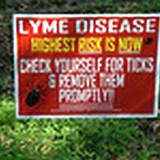
Removing a Tick
Ticks will often attach to your body while you walk through tall grass or when you walk in the woods in the early spring. when you get home, inspect your body immediately for ticks. If you find one, remove it immediately! It helps to put a few drops of olive oil on the tick to suffocate it, then take a pair of sterilized tweezers or special tick tweezers (found in pharmacies). Grasp the tick as close as possible to your skin and gently pull it out. For stubborn ticks, try placing a blown-out match on the tick (don't let it touch your skin, of course). Wash your hands and the bite area with soap and water and apply an antiseptic.
Prevention Always the Best Medicine
When venturing out into the woods, garden and even in fields with tall grass do everything you can to prevent a tick invasion. In the spring and summer try to wear clothing, boots, long pants, long sleeve shirts, even a hat that covers as much of the skin as possible.
 |  |  |
Tricks to Deter Ticks &
Naturally Treat Lyme Disease & Symptoms
Studies have shown that using molasses grass, sage, pyrethrum and lavender as ground covers seem to deter ticks from living in that area.
Basil
This remedy has been used to control ticks for hundreds of years. Crush an entire basil plant and place the basil into 2 quarts of water. allow it to remain for 2 hours before straining and using in a sprayer. Just spray it freely around the outdoors and animal bedding.
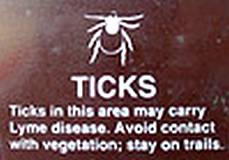 Clothing
Clothing
In the spring and summer always wear clothing---boots, long pants, long sleeved shirts, even a hat that covers as much of the skin as possible, especially when in the woods or in fields with tall grass. Tuck your shirt into your pants and your pants into your socks or the tops of your boots. Wear light-colored, tightly woven fabrics: It will be easier to spot ticks on light colors than on dark ones, and ticks will not be able to grab onto the tight weave of slippery materials, such as nylon. Also, apply insect repellent and check yourself frequently.
If you are bitten, remove the tick quickly and monitor the bite area. See a doctor immediately if any parts of the tick remain in the wound, if your skin becomes inflamed or if you develop joint pain, a rash, fever or flu-like symptoms.
Essential Oils
Ticks are attracted to butyric acid,/i>, which is a component of sweat. The scent can be masked with either cedar or citrus-based essential oils. Add 15-20 drops of the oil to 3 tablespoons of vegetable oil and apply to exposed skin. This blend also acts as a protective disinfectant. You can also spray the citrus on your pets for tick and flea protection, or you can use the skin of an orange, lemon or lime to rub on your pets fur when enjoying the outdoors but it's best to do this when you're planning a bathing your pet within a few hours.
Clove Essential Oil
Clove essential oil can act as a wound slave and disinfects and helps clear up infections. Add 16-20 drops of the oil to 1/2 cup of skin cream for an excellent wound-healing salve.
Anti-inflammatory Compress
Arnica and chamomile, whis possess anti-inflammatory and disinfectant qualities, have long been used to treat skin inflammations. Pour 1 cup of boiling water over 2 tablespoons of dried anica and chamomile flowers. cover and steep for 10 minutes and strain. Dip a cotton pad in the infusion and place it on the wound for a few minutes. Repeat 3 times a day with fresh tea.
Medicinal Teas
Willow-bark tea
White-willow bark can be used in a tea to ease headaches that occur after a tick bite. Its effectiveness is due to the presense of salicin, which is related to acetylsalicylic acid, a main component of aspirin.
Pour 1 cup of boiling water over 1 teaspoon of ground white-willow bark. Steep for 5 minutes and strain through a fine tea strainer. Becaue the tea canirritate the mucous membranes of the stomach, it should not be taken in large doses. You can also add licorice root to willow-bark tea to improve the flavor.
Sarsaparilla ginger tea
A tea made with sarsaparilla root and ginger may relieve joint stiffness that occurs after a tick bite. This tea is also beneficial as a result of sarsaparilla's anti-inflammatory gualities, while the ginger may ease digestive disturbances that occur from antibiotic treatments.
Add 2 teaspoons of sarsaparilla to 2 cups of water in a pot. Bring it to a boil and simmer until the liquid is reduced by half, to 1 cup. Add 1/2 teaspoon of ginger and steep for 20-30 minutes. Strain and drink 2-3 cups each day.
DISCLAIMER:
The statements made here have not been approved by the Food and Drug Administration. These statements are not intended to diagnose, treat or cure or prevent any disease. This notice is required by the Federal Food, Drug and Cosmetic Act.
Return from Lyme Disease & Ticks Guide to Grandma's Ailments & Treatments Guide
Return to Grandma's Wisdom Home





